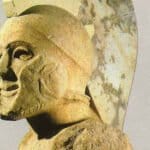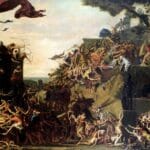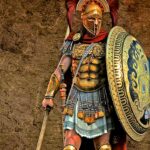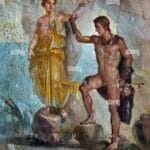The very name “Sparta” evokes images of warrior kings, iron discipline, and legendary battles. Yet, behind the stark facade of Spartan militarism lies a rich tapestry of myth and legend, where powerful women, not just men, shaped destiny. This article delves into the intriguing stories of the Spartan queens of myth, focusing on Leda, whose divine entanglement set the stage for epic events like the Trojan War, and exploring the lesser-known Queen Sparta, whose name became synonymous with the mighty city-state itself.
Leda: Queen of Sparta, Mother of Legends
Leda, an Aetolian princess by birth, ascended to the throne of Sparta through her marriage to King Tyndareus. However, it wasn’t her royal lineage that secured her place in the annals of Greek mythology. Instead, it was a divine seduction, an encounter with Zeus, the king of the gods, disguised as a magnificent swan. This union, as captivating as it is controversial, resulted in the birth of children destined for greatness and tragedy: Helen, Clytemnestra, Castor, and Pollux.
The Swan and the Queen: A Mythological Masterpiece
The story of Leda and the swan is more than just a tale of divine intervention; it’s a potent symbol woven into the fabric of Greek culture. It likely represents the complex intersection of the divine and the mortal, exploring themes of desire, power, and the often-blurry lines of consent. Artists throughout history, from ancient sculptors to Renaissance painters, have been captivated by this mythical encounter, capturing its raw energy and symbolic weight in countless works of art.
The myth also suggests a divine ancestry for the Spartan lineage. Leda’s offspring, touched by the hand of Zeus himself, became key players in the unfolding drama of the age. This divine connection adds another layer of complexity to Sparta’s identity, intertwining its earthly power with the realm of the gods.
Children of Destiny: Shaping the Course of History
Leda’s children became pivotal figures in Greek legend. Helen, renowned for her breathtaking beauty, became the wife of King Menelaus of Sparta. Her abduction by Paris, the prince of Troy, sparked the Trojan War, a conflict that immortalized heroes like Achilles and Odysseus. If you’re fascinated with Greek mythology, know that the tale of Perseus and Andromeda is vibrantly depicted in a fresco preserved in the ruins of Pompeii. It gives you a visual taste of how these myths were brought to life.
Clytemnestra, Helen’s sister, married Agamemnon, Menelaus’s brother and leader of the Greek forces in the Trojan War. Upon Agamemnon’s return, Clytemnestra, consumed by vengeance for his sacrifice of their daughter Iphigenia, murdered him, triggering a cycle of violence within the House of Atreus. This act highlights the tragic consequences of war and the complex dynamics of power and revenge within the ancient Greek world.
Castor and Pollux, the Dioscuri twins, were celebrated for their bravery and skill in battle. Their myths vary, with some traditions portraying one twin as mortal (Castor) and the other immortal (Pollux), a duality that adds to their mystique. This difference in their mortality may symbolize the inherent dualities present in life, such as strength and weakness, or life and death. The twins’ story further explores themes of brotherhood, sacrifice, and the complexities of fate.
| Child | Father (Debated) | Notable For |
|---|---|---|
| Helen | Zeus/Tyndareus | Her beauty sparked the Trojan War |
| Clytemnestra | Zeus/Tyndareus | Wife (and murderer) of Agamemnon |
| Castor | Tyndareus/Zeus | Mortal twin of the Dioscuri |
| Pollux | Zeus/Tyndareus | Immortal twin of the Dioscuri |
The varied accounts of the twins’ parentage, some attributing Castor to Tyndareus and Pollux to Zeus, add a layer of ambiguity to Leda’s story. This ambiguity was likely intentional, allowing ancient storytellers to explore different facets of fate and free will, as well as the complicated relationships between gods and mortals.
Queen Sparta: The Eponymous Ruler
While Leda’s fame rests on her divine offspring, another queen holds a significant, though less prominent, place in Spartan lore: Queen Sparta herself. Daughter of Eurotas, the river god of Laconia, Queen Sparta gave her name to the very city-state that would become a symbol of military might. This connection to the land itself suggests a deep-rooted symbolism, linking Spartan identity to its geographical origins.
Origins and Legacy
Compared to Leda’s dramatic tale, Queen Sparta’s story is shrouded in relative obscurity. Pausanias, a Greek writer and traveler of the 2nd century AD, provides some key details in his “Description of Greece,” highlighting her importance as the namesake of the city. This act of naming emphasizes the importance of female figures even within a heavily patriarchal society like Sparta.
Queen Sparta’s story, while less sensational than Leda’s, provides a crucial link to the land and its identity. Her name, forever tied to the city-state, speaks to the power of origin myths and the ways in which ancient cultures sought to connect their present to a legendary past.
Comparing the Queens: Two Sides of Spartan Identity
Leda and Queen Sparta, though vastly different in their narratives, provide a fascinating lens through which to view Spartan identity. Leda, entwined with the whims of the gods, represents the external forces that shaped Spartan destiny, particularly through the epic events sparked by her children. Queen Sparta, on the other hand, embodies the internal strength and connection to the land that formed the bedrock of Spartan society. This duality suggests a more nuanced understanding of Spartan culture than just its militaristic exterior.
| Feature | Leda | Queen Sparta |
|---|---|---|
| Nature | Mythological, Entangled with the Divine | Historical/Mythological, Connected to the Land |
| Source of Influence | Through her legendary offspring | Through her name and connection to Laconia |
| Impact | Indirect, shaping events through her children’s actions | Direct, giving identity and meaning to the city-state |
Unraveling the Mysteries: Further Research and Exploration
The stories of Leda and Queen Sparta are not static relics of the past. Ongoing research and archaeological discoveries continue to shed light on these fascinating figures. New interpretations of ancient texts and visual representations in art offer fresh perspectives on their roles and significance within Spartan society. These ongoing investigations suggest that our understanding of Spartan queens, and indeed, of ancient Greek culture itself, is constantly evolving.
By studying these powerful women, we gain a deeper appreciation for the complexities of ancient societies and the enduring legacy of myth. They remind us that even within patriarchal structures, women wielded influence and played crucial roles in shaping the course of history, both in the world of myth and in the realities of their time.
- Unveiling Bernhard Caesar Einstein’s Scientific Achievements: A Legacy in Engineering - July 15, 2025
- Uncover who is Jerry McSorley: CEO, Family Man, Business Success Story - July 15, 2025
- Discover Bernhard Caesar Einstein’s Scientific Contributions: Unveiling a Legacy Beyond Einstein - July 15, 2025















